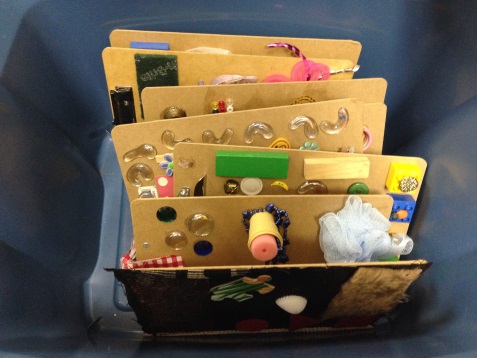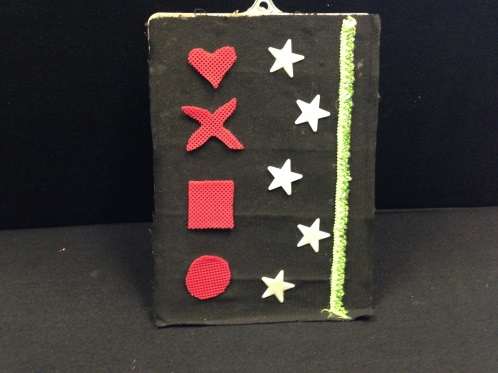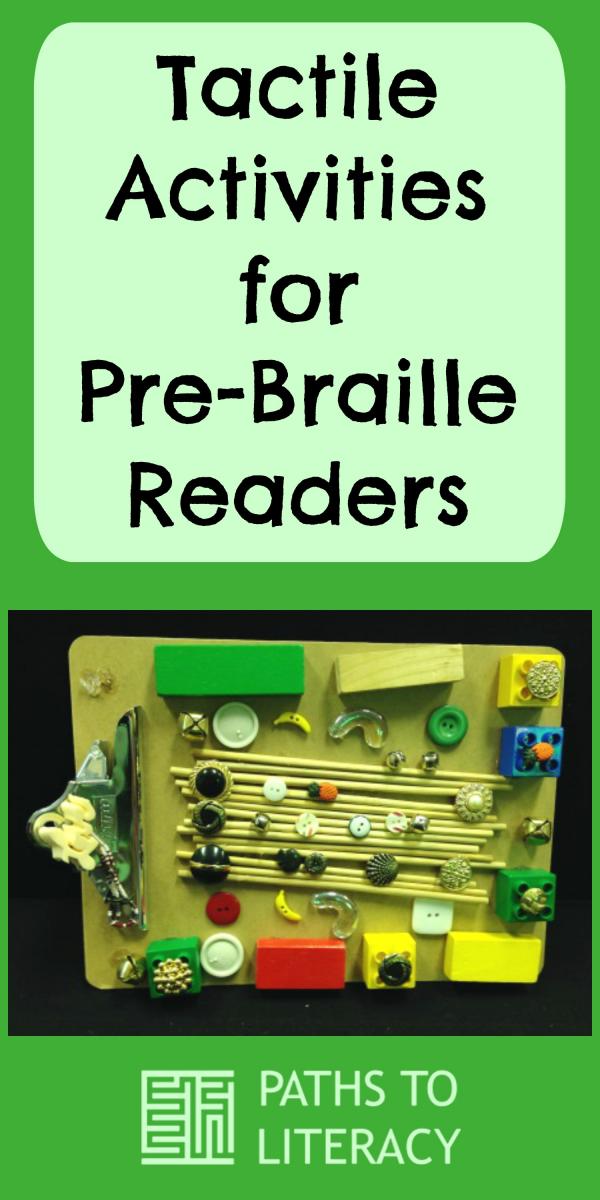Tactile Activities for Pre-Braille Learners
A resource for teachers or parents of tactual learners
 When many people first think of literacy skills, or pre-braille skills they think of things like tracking braille lines, identifying tactual or textured pictures or exploring objects in a story box, just to name a few. Before we can do many of these skills, we have to be able to touch and be able to touch in a functional way. This is why I call this post "Back to the basics".
When many people first think of literacy skills, or pre-braille skills they think of things like tracking braille lines, identifying tactual or textured pictures or exploring objects in a story box, just to name a few. Before we can do many of these skills, we have to be able to touch and be able to touch in a functional way. This is why I call this post "Back to the basics".
I am a preschool teacher for children with visual impairments. I teach children of all different ability levels. I have students who are tactually defensive and refuse to touch most things, I have students who cannot yet touch things gently and tear, rip, scratch or pick at everything they touch, and I have students who are eager to touch and learn through many different materials. I came across a tool that can be used to work on many different pre-braille skills and with many different ability levels.
A few years ago a box full of textured clipboards, a dozen or so, were given to me. At the time I was unsure where I was going to store them, and what I would do with them. One day I brought one out for a student who tore everything he touched.... I mean EVERYTHING!! I was trying to find something durable that we could use to work on "looking gently" (an important braille skill). These boards served the purpose for this student. As I worked with him and explored these boards further I came up with more ideas, and more students came to mind that might benefit from this tool.
Some ideas for use:
-
Just to touch and explored tactual materials, they can be created to meet any tactual need

- Exploring and comparing textures, learning language for textures... hard, soft, rough, smooth….
- Teaching comparisons such as: long/short, hard soft, big/small and so on.
- Teaching shapes, or counting
- Touching things gently, not rubbing, scratching, picking or tearing
- Looking at items one at a time, or searching systematically
- Concepts of a page: top/bottom, left/right, corners
- Tracking left to right
- and much more...
This tool is versatile as you can see by the suggested list of uses above. These boards can be easily created to meet the needs of different children, and you can use the materials to create boards that are meaningful to individual students.
 Materials needed:
Materials needed:
- Mine are created on clipboards... I would have never thought of this on my own, but they seem to be the most durable
- Miscellaneous texture materials and objects: small objects of interest, hair bows, small cars, beads, buttons, ribbon, zippers.... ANYTHING!
- Strong glue... mine appear to be hot glued on, and have withstood a lot!! We have only had to make minor repairs.
This tool is something that can easily be used at school or home, can be individualized and can teach a wide range of literacy skills. Get creative and have fun!


Comments
thanks for sharing
Great
Spicing it up with a little braille